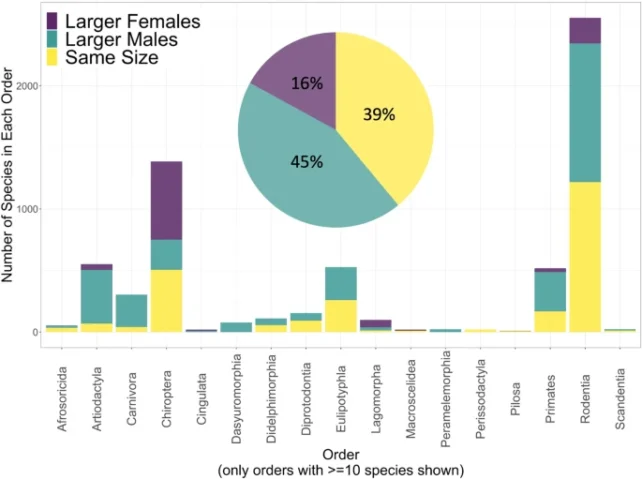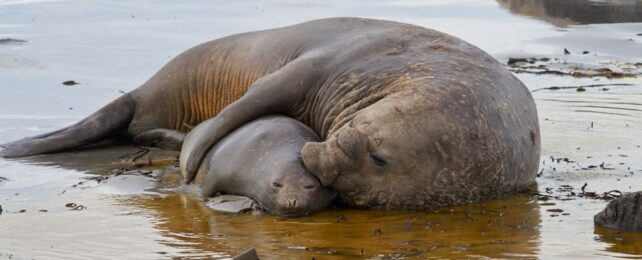"The males of most species are larger and stronger than the females." So wrote Charles Darwin in 1871 while laying out his theory of sexual selection in a seminal book called The Descent of Man.
For more than a century, that idea has largely persisted, dominating discussions on mammals especially. At last, arguments against this common male bias are finally being heard.
Three ecologists from Princeton University have now completed a new meta-analysis that includes data from more than 400 species, which, together, cover almost every order of mammal. Their findings suggest that nearly 39 percent of mammal species have males and females with similar mean body masses – a concept known as sexual monomorphism.
By contrast, roughly 45 percent of species had larger males, on average, and 16 percent had larger females.
Even in those cases of sexual 'dimorphism', however, most size differences were not extreme.
"While species with larger males were the largest single category, we found that males are not larger than females in most mammalian species, and that sexual size monomorphism was almost as frequent as larger males," explain the ecologists, led by Kaia Tomback.

Unsurprisingly, the mammal orders with the most prevalent sex size differences were those that scientists had studied the most, including carnivores, primates, and ungulates. Among these species, larger males are the norm, which means historical bias may have skewed our understanding.
When the team re-ran their analysis using body length instead of body mass, roughly half the species they analyzed were monomorphic, which suggests that how scientists measure 'largeness' can also skew results.
Since the 1970s, some evolutionary biologists have argued that there is only weak support for sex size differences among mammals. Yet because accurate and consistent estimates of body size among a diversity of species are lacking, this opposing view has historically failed to gain traction.
Watch almost any nature documentary on our furry, milk-producing relatives and you will notice a common narrative: a big, burly male vying with other males for the attention of a small, docile female.
Think of two rams battling it out on a cliffside, two deer locking antlers, or two elephant seals competing for a harem. These are the stories told most, but that doesn't mean they are representative of most mammals.
In fact, the male northern elephant seal (Mirounga angustirostris) was a clear outlier in the current study. It showed the largest sex size difference of all, with males weighing in at a mean mass 3.2 times that of females.
The ecologists say their findings are not the last word on sexual size dimorphism. After all, the team only analyzed 5 percent of all mammal species due to a lack of rigorous data.
"Still," the three researchers conclude, "our preliminary results showing a predominance of sexual monomorphism in body length in mammals reinforce the idea that it may be time to retire the 'larger males' narrative."
Far greater attention now needs to be given to how sexual selection and other survival factors impact the evolution of females.
By doing so, we could learn a whole lot more about the natural world and its intricate workings. The tube-nosed bat, for instance, has females 1.4 times larger than males on average, and its large size is thought to facilitate carrying embryos or offspring during flight.
This idea aligns with the 'Big Mother Hypothesis', which is an explanation for large female body size that was first proposed decades ago and championed by an evolutionary biologist named Katherine Ralls, who argued species with larger females are "rarely, if ever, the result of sexual selection".
That idea has received relatively little attention since.
"As old assumptions are revisited with larger datasets and greater scrutiny," researchers at Princeton write, "we see great potential in new breakthroughs in sexual selection theory."
The study was published in Nature Communications.
